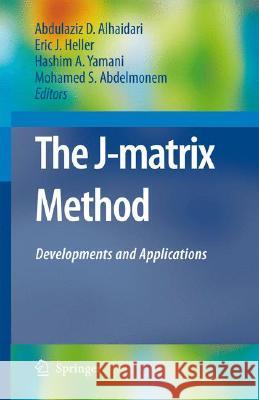The J-Matrix Method: Developments and Applications » książka
The J-Matrix Method: Developments and Applications
ISBN-13: 9781402060724 / Angielski / Twarda / 2008 / 356 str.
The J-Matrix Method: Developments and Applications
ISBN-13: 9781402060724 / Angielski / Twarda / 2008 / 356 str.
(netto: 576,41 VAT: 5%)
Najniższa cena z 30 dni: 578,30
ok. 22 dni roboczych
Bez gwarancji dostawy przed świętami
Darmowa dostawa!
Although introduced30 years ago, the J-matrix method has witnessed a resurgence of interest in the last few years. In fact, the interest never ceased, as some authors have found in this method an effective way of handling the continuous spectrum of scattering operators, in addition to other operators. The motivation behind the introduction of the J-matrix method will be presented in brief. The introduction of fast computing machines enabled theorists to perform cal- lations, although approximate, in a conveniently short period of time. This made it possible to study varied scenarios and models, and the effects that different possible parameters have on the ?nal results of such calculations. The ?rst area of research that bene?ted from this opportunity was the structural calculation of atomic and nuclear systems. The Hamiltonian element of the system was set up as a matrix in a convenient, ?nite, bound-state-like basis. A matrix of larger size resulted in a better con?guration interaction matrix that was subsequently diagonalized. The discrete energy eigenvalues thus obtained approximated the spectrum of the system, while the eigenfunctions approximated the wave function of the resulting discrete state. Structural theorists were delighted because they were able to obtain very accurate values for the lowest energy states of interest.











